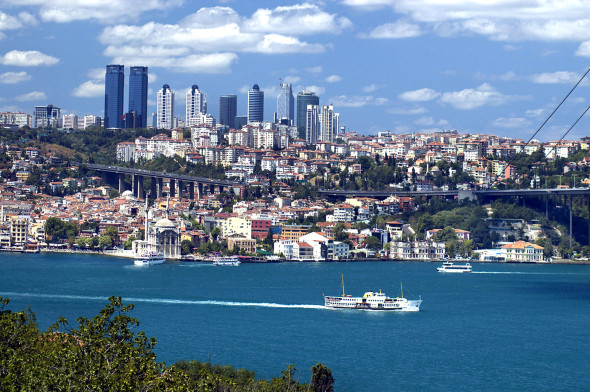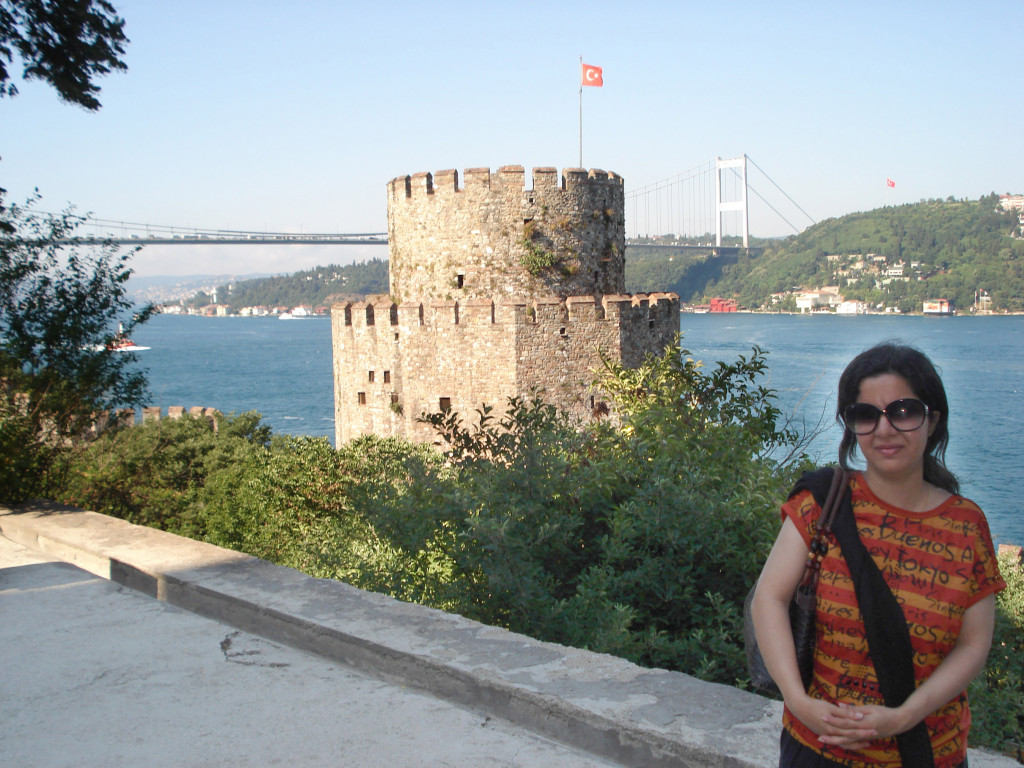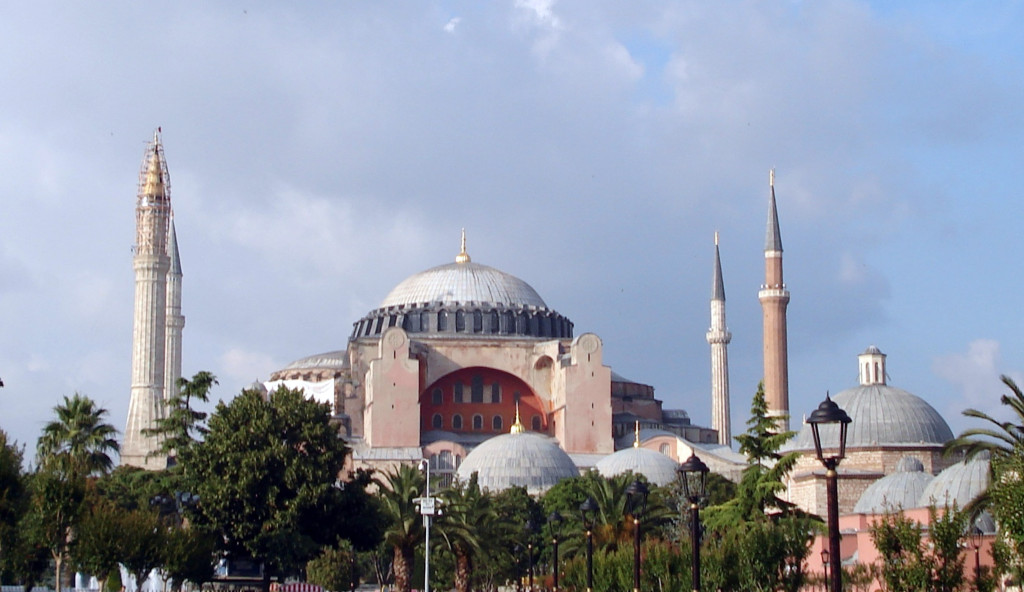Come, come again, whoever you are, come!
Wanderer, worshipper or lover of leaving, come!
Come even if you have broken your penitence a thousand times,
Ours is not a caravan of despair, come as you are."
Mevlana Rumi
As the plane neared the airport, the first glimpse I had of Istanbul was a sea of minarets. It was dawn and the minarets, of different sizes and silhouetted against the colored skyline, engulfed the plane with a magical charm. It provided a glimpse of the wonders of the city that lay below.
I visited Istanbul this summer to attend a seminar on ‘secularization’. After the seminar, I took additional days off from work to explore the city. The discussions of the seminar were with me as I roamed through Istanbul’s historic streets and reflected on the evolution of this great city.
From the airport, my first stop in Istanbul was the Kalyon Hotel in the Sultanahmet area. Our hotel was located along the city walls and the shores of the Bosphorus Sea. One of the reasons why Istanbul has developed as a world metropolis is its unique geographical location. Istanbul is the only city in the world which is established in two continents: Europe and Asia. The historical section, and current day center of business and trade, is located in Europe, whereas the residential area is located in Asia. Both sides of Istanbul are connected by two bridges built across the Bosphorus Sea. A short walk along the sea from our hotel would allow us to view the Galata Bridge, and see several sea-food restaurants, fishermen, ships and ferries along the way. For a Karachi-wearied traveler, nothing could be more refreshing than a walk along the blue Bosphorus!
Sultanahmet is one of the most historically significant parts of Istanbul: the Haghia Sophia, Blue Mosque and magnificent Topkapki Palace are all located in this area. Close to these world famous landmarks, are some lesser known attractions such as the Aramet Bazaar and the Basilica Cistern. The area is also known for the presence of whirling derwishes, or followers of Rumi’s Mevlavi Order of Sufi’s. These dancers can be viewed at special sema’s or at restaurants, where music and dance entertain diners. Overall the Sultanahmet area provides a magical walk into the past of Istanbul, which can boast of once being the capital of the Eastern Roman and Byzantine empire and thus the heart of Christiandom; the capital of one of the greatest Muslim Empires of all times (i.e. the Ottoman Empire) and currently the capital of the modern day Republic of Turkey. Istanbul thus presents a curious mix of east and west – and the (well-preserved) ancient and modern.
My first stop in Sultanahmet was the Hagia Sophia. Hagia Sophia was constructed in 537 A.D. during the Byzantine Age. With its huge domed ceiling, it is one of the greatest technological and architectural feats from this era. It was used as a church, and later converted into a mosque. From 1935 onwards, after the establishment of the modern Turkish Republic under the leadership of Mustafa Kemal Ataturk, Hagia Sophia became a museum open to tourists and visitors. The intricate mosaic representations of religious figures from Christianity are worth viewing, and present a striking contrast to the names of leading personalities of Islam inscribed in Arabic in the main hallway. Close to the Hagia Sophia is an underground cistern which was built in Byzantine times to store water supplies for the city. The cistern is supported by 336 columns from different Roman structures, including two statues of the Greek legendary figure Medusa.
My next stop was of course the Blue Mosque which is located right across Hagia Sophia, and to some extent, mirrors this building in terms of overall structure. The mosque was constructed by the 14th Ottoman Sultan Ahmet I. The interior is decorated by tiles and embellishments in blue and green, on the walls and dome – thus the name the “blue” mosque. A quiet corner is available for women to pray. The mosque has an adjoining madrassa, bazaar and public fountain. The mausoleums of Turkish rulers and their family members can be found around both Hagia Sophia and the Blue Mosque.
From the religious to the secular: my next destination in Sultanahmet was Topkapi Palace. This splendid palace served as a home, administrative center and royal treasury for the Ottoman Emperors from the 15th to the 19th century. The palace is home to the most beautiful collection of royal jewels, including the Spoon Maker’s Diamond, which can make any jewelry lover gape in awe! For the more devout, the palace has a collection of religious relics, including the footprint of Prophet Mohammad, which was brought from Egypt after the Ottoman conquest. During the tour of Topkapi, visitors are also narrated stories of intrigues and assassinations in the outwardly glamorous ‘harem’ or living quarters… Within a short distance of Topkapi Palace is the Gulhane Garden, where the first statue of Kamal Atataurk in Istanbul was erected. I also visited a quaint reading room near this garden, which contained portraits of members of Turkey’s freedom movement and busts of famous Turkish authors including Orhan Pamuk.
I took several walks along the sea shore and ferry trips during my stay in Istanbul. During one of these boat trips, I visited the Princes Islands. These islands were used to house exiled princes and nobility during the Byzantine Era. Currently the islands are green and peaceful and offer wonderful food, beaches and horse rides for visitors.
During another boat trip, I decided to indulge in a little historic adventure and visit the Rumeli Fort. The Rumeli Fort was built by Sultan Mehmed II in 1452, for the conquest of Istanbul (earlier known as Constantinople, or the ‘City of Emperor Constantine’). The fort was built along the Bosphorus Sea, across the Anadolu Fortress. The stone fortress contains three towers, a cannon museum and an open air theatre. It is built along a slope and has magnificent stone walls and plateaus, which are quite a challenge to climb. As I studied the mechanics of this fortress (which was constructed in 4 months by thousands of craftsmen and workers), and the ingenuity with which it was used to block aid through the Bosphorus to Constantinople and conquer the city, I marveled at how resourceful and capable mankind has always been. I often get this feeling as I walk through ancient buildings – that we are not the all-time smartest of our species.
After Rumeli Fortress, I walked through Emirgan, where the ‘hip and happening’ of Istanbul hang out in European and Mediterranean style café’s and restaurants, and a well-known public garden.
Speaking of European style: a visit to the Dolmabache Palace Museum is much recommended. The palace was built in the 19th century, along the lines of the Louvre and Buckingham Palace, to impress ambassadors and statesmen from Europe. Its sheer opulence is worth viewing. The last six Ottoman emperors (rulers of a fairly bankrupt empire, at this point!) and Kamal Ataturk lived in this palace. The Dolmabache mosque and clock tower are also impressive examples of the finest European architecture. Smaller palaces, also built in European style, dot the shores of the Bosphorus.
In all this opulence and grandeur, my favorite moment during my visit to Istanbul was at a sema at the house of Derwish Dedi Efendi, where the ecstatic dance of Mevlani Rumi’s was performed. The ‘sema’ represents the spiritual journey of man’s ascent towards perfection: a journey that in some ways is echoed in Turkey’s own journey through various ideologies, religions and leaderships, to its current identity as a modern republic. Rumi preached tolerance and enlightenment: I saw his ideas reflected in Istanbul, in the melting pot of locals and tourists, both fair and dark-skinned who spoke various languages.
There is so much about Turkey, including sites outside Istanbul, such as Konya, Troy, Ephesus and Cappadocia, that I have not even mentioned. Visit for yourself and let the journey continue…








